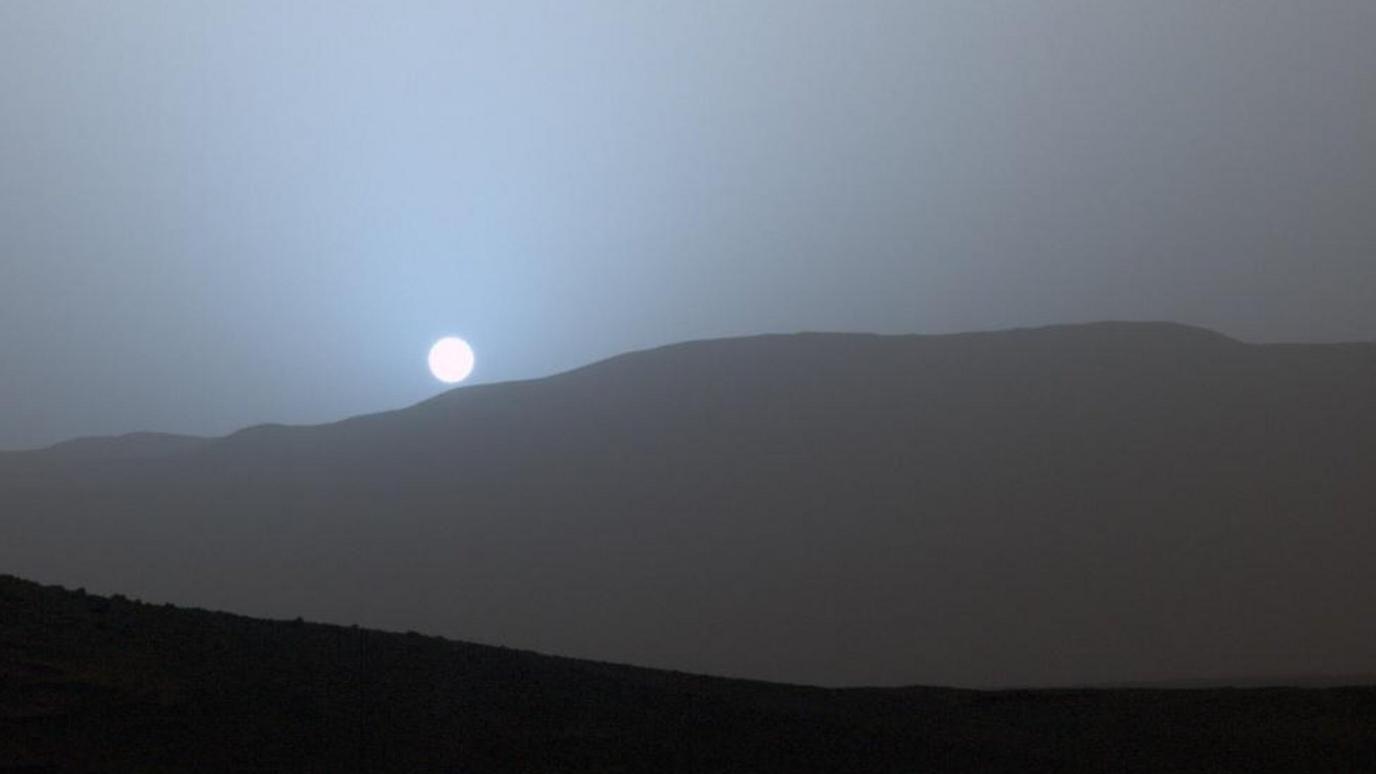Four years of Curiosity: Four things we've learned from Nasa Mars rover
- Published
How did Curiosity make it to the surface of Mars?
It's four years since Nasa's Curiosity rover landed on the planet Mars, on 6 August 2012.
The robot's mission is to search for evidence of life and to learn more about the planet.
It can take pictures, collect samples and study the surface of the planet - and then beam the information back to scientists on Earth.
Here are four of the biggest discoveries it's made about Mars over the past four years.
1. Mars could have supported life
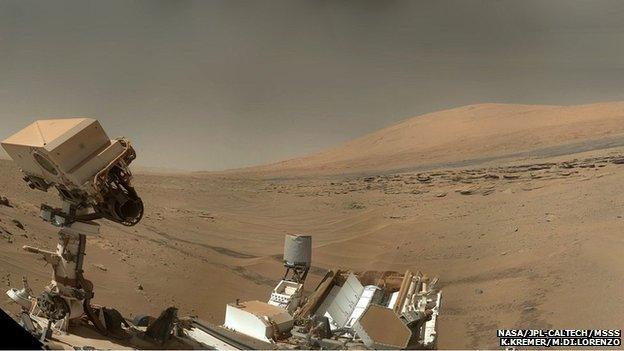
The Curiosity rover found "burps" of methane on Mars
The Curiosity rover found that ancient Mars had the right chemistry to support life.
It found sulphur, nitrogen, oxygen, phosphorus and carbon in the samples it collected, which are key ingredients necessary for life.
It also found methane, which is a gas that, on Earth, comes largely from living things.
2. Liquid water can exist on Mars
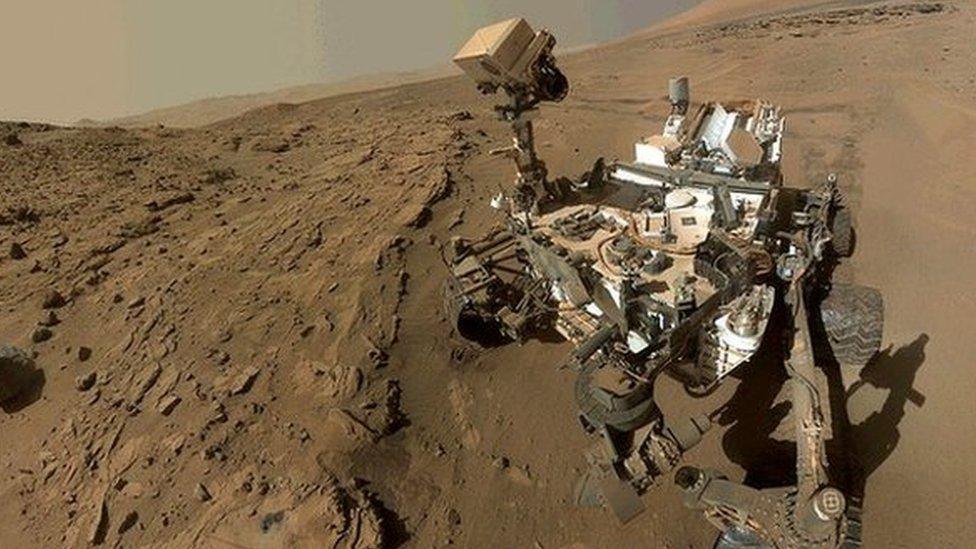
Curiosity's landing site of the Gale Crater was once home to a lake
In 2015, Curiosity found that that water can exist as a liquid just beneath the surface of Mars.
Mars should be too cold to support liquid water at the surface.
But the rover discovered salts in the soil - that means the freezing point of water is lower than we thought, and so liquid water could exist.
On a separate mission in 2015, the Mars Reconnaissance Orbiter spacecraft took pictures that showed mysterious streaks on Mars - evidence that there could be flowing water on the Red Planet.
3. Radiation on Mars could harm humans
Martin reports on Mars' serious health warning
Astronauts travelling to the Red Planet would get a big dose of damaging radiation.
The Curiosity counted the number of high energy space particles striking it on its eight-month journey there.
It shows that astronauts would be exposed to radiation levels higher than current safety limits allow.
4. Sunset is 'blue' on Mars
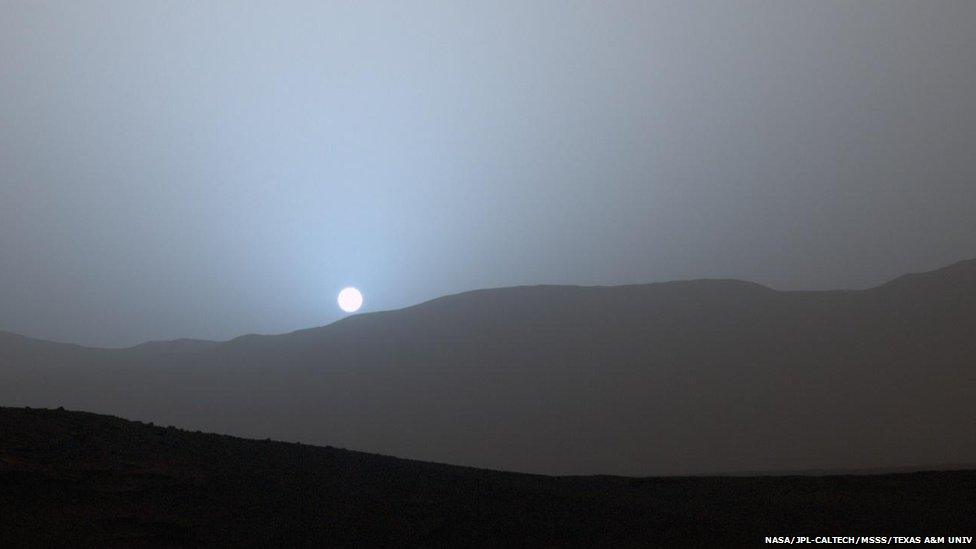
The sunset looked blue because of a dust storm
The Curiosity rover sent back the first colour picture of a sunset on Mars - and it turns out it's blue!
The rover snapped some pictures of the sunset in between several dust storms on the planet.
The reason it looks blue is because the reds and yellows from the Sun were absorbed by the dust that was still floating in the atmosphere..
That meant the blue coloured light was able to get through the dust more easily and that was picked up by the rover.
- Published17 December 2014
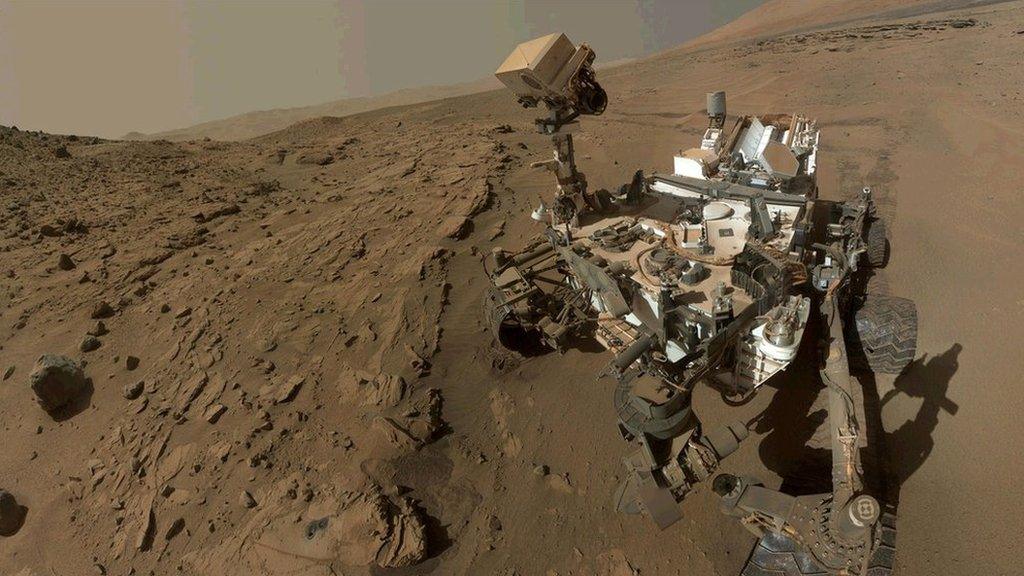
- Published14 March 2016
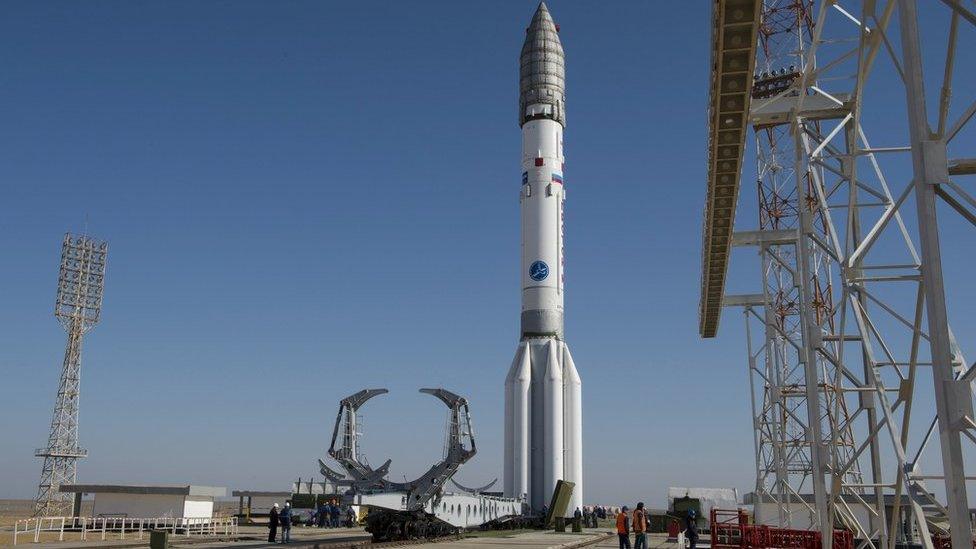
- Published16 June 2016

- Published14 April 2015

- Published12 May 2015
